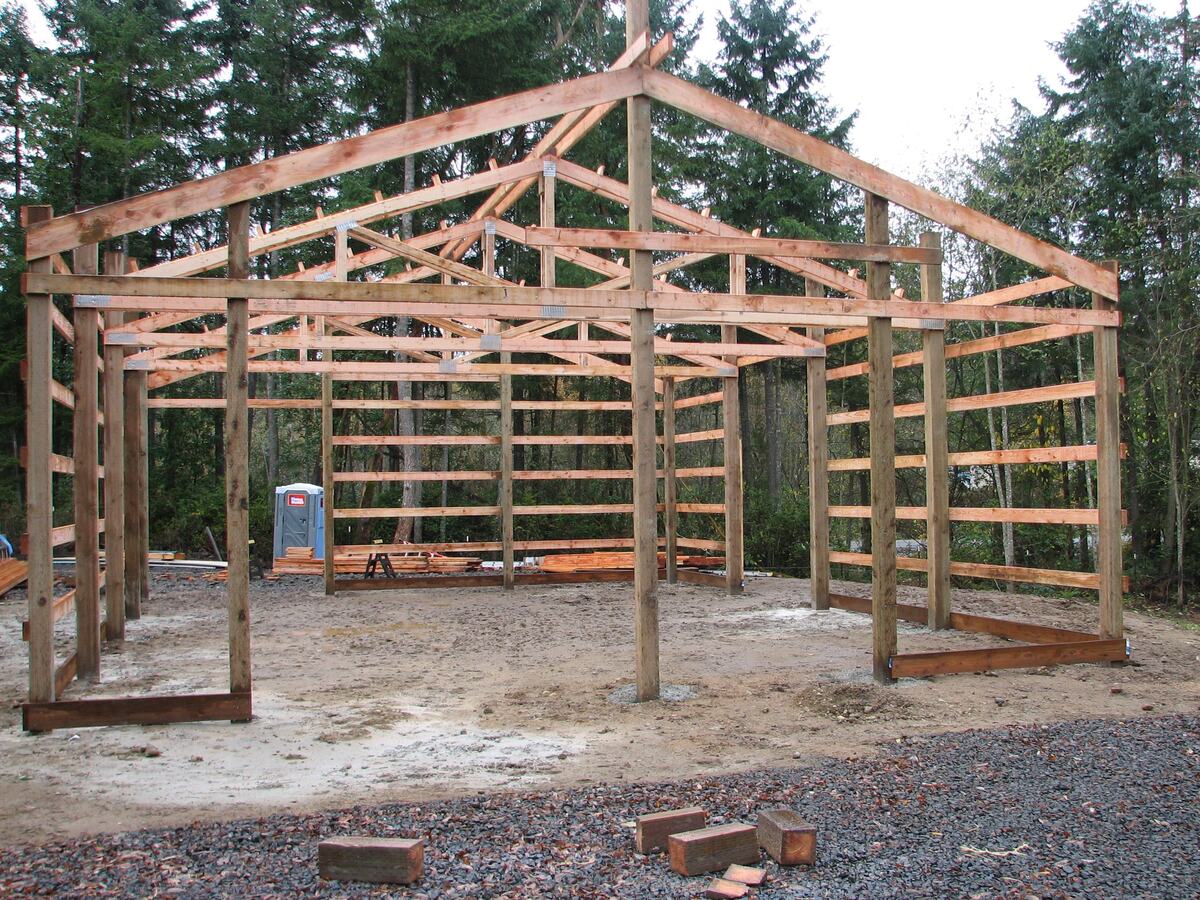Monday, November 11, 2024
How to Build a Pole Barn with Galvanized Steel Posts

Pole barns, renowned for their versatility and cost-effectiveness, have become a popular choice for various purposes. From housing livestock to storing equipment, these structures offer a sturdy and adaptable solution. While traditional wood posts are common, galvanised steel posts provide a more durable and long-lasting alternative, offering enhanced resistance to the elements and pests. This comprehensive guide will walk you through the process of building a pole barn with galvanized steel posts, equipping you with the knowledge and steps necessary for a successful construction project.
1. Planning and Design
a. Purpose and Size:
Before embarking on the construction, meticulously plan the purpose and size of your pole barn. Consider the intended usage, such as housing livestock, storing equipment, or providing workshop space. Determine the required dimensions, including length, width, and height, to ensure adequate space for your needs.
b. Site Selection and Preparation:
Choose a level and well-drained site for your pole barn. This ensures stability and minimizes potential problems with water accumulation. Clear the area of debris, vegetation, and any obstacles.
c. Building Codes and Permits:
Consult local building codes and regulations to determine the requirements for pole barn construction in your area. Obtain necessary permits and ensure your plans comply with all applicable codes. This includes requirements for foundation, wind load, and snow load specifications.
2. Foundation Design and Installation
a. Foundation Type:
Pole barn foundations commonly employ concrete piers, concrete footings, or a combination of both. Concrete piers offer greater stability and load-bearing capacity, while concrete footings are suitable for lighter loads and less demanding applications.
b. Pier Placement and Depth:
Determine the number and placement of piers or footings based on the size and load requirements of your pole barn. Use a tape measure and stakes to mark the locations accurately. The depth of the piers or footings should be below the frost line in your region, preventing heaving and shifting due to freezing and thawing.
c. Concrete Pouring and Curing:
Mix concrete according to manufacturer's instructions and pour it into the prepared foundation holes. Level the concrete and ensure it is adequately compacted. Allow sufficient curing time for the concrete to reach its full strength before proceeding to the next steps.
3. Galvanized Steel Post Selection and Installation
a. Post Size and Strength:
Choose galvanized steel posts with a diameter and wall thickness suitable for the intended loads and structural requirements. Refer to engineering specifications or consult with a structural engineer for guidance.
b. Post Placement and Alignment:
Align the galvanized steel posts precisely with the foundation piers or footings. Use a level and plumb bob to ensure verticality and accurate placement.
c. Post Anchoring and Bracing:
Secure the posts to the foundation using appropriate anchoring methods, such as concrete anchors or heavy-duty bolts. Install temporary bracing to stabilize the posts during construction.
4. Framing and Roofing
a. Framing System:
Build a robust framing system to support the roof and walls. Typically, this involves using timber or steel beams, purlins, and girts.
b. Roof Framing:
Construct the roof framing using trusses, rafters, or a combination of both, depending on the roof pitch and span. Ensure proper spacing and connections for structural integrity.
c. Roofing Material:
Choose a roofing material that meets your needs and budget. Options include metal roofing, asphalt shingles, or tile. Consider factors like weather resistance, aesthetics, and maintenance requirements.
5. Siding and Walls
a. Siding Material:
Select a siding material that complements the overall design and meets your desired aesthetic. Options include metal siding, wood siding, or vinyl siding.
b. Wall Framing and Sheathing:
Construct the wall framing using studs, joists, or a combination thereof. Apply sheathing over the framing to provide a solid base for the siding.
c. Insulation and Vapor Barrier:
Insulate the walls to improve energy efficiency and provide thermal comfort. Install a vapor barrier to prevent moisture build-up within the walls.
6. Doors and Windows
a. Door Placement and Size:
Decide on the location, size, and type of doors for your pole barn. Consider the intended use and traffic flow.
b. Window Placement and Design:
Select the size, style, and placement of windows to provide natural light and ventilation.
c. Installation:
Install the doors and windows according to manufacturer's instructions, ensuring proper sealing and weatherproofing.
7. Finishing Touches
a. Interior Finishes:
Choose interior finishes that suit the intended use of the pole barn. Options include drywall, plywood, or exposed beams.
b. Electrical and Plumbing:
Install electrical wiring and plumbing as needed, complying with all applicable codes and regulations.
c. Painting and Decoration:
Paint or stain the exterior and interior to enhance the appearance and protect the surfaces.
8. Safety Precautions
a. Personal Protective Equipment:
Always wear appropriate personal protective equipment (PPE) during construction, including safety glasses, gloves, and hard hats.
b. Tools and Equipment:
Use tools and equipment properly and ensure they are in good working condition.
c. Weather Conditions:
Avoid working in hazardous weather conditions, such as strong winds or heavy rain.
9. Maintenance and Repair
a. Regular Inspections:
Inspect your pole barn regularly for signs of damage or deterioration.
b. Maintenance Tasks:
Perform routine maintenance tasks, such as cleaning gutters, sealing cracks, and painting.
c. Repairs:
Address repairs promptly to prevent further damage and ensure the longevity of your pole barn.
Conclusion:
Building a pole barn with galvanized steel posts can be a rewarding and cost-effective project. By carefully planning, designing, and following the steps outlined above, you can construct a durable and versatile structure that meets your specific needs. Remember to prioritize safety throughout the construction process and engage professional help if required. With proper maintenance, your galvanized steel post pole barn will provide years of reliable service.
No comments:
Post a Comment
Note: Only a member of this blog may post a comment.